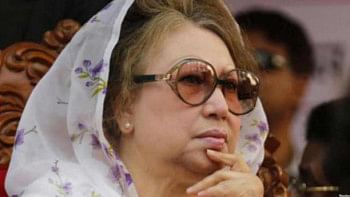Dhaka Ahsania Mission leaps forward with a cancer hospital

Dhaka Ahsania Mission will take a giant step forward tomorrow in improving the quality of life of the country's disadvantaged people as it officially opens its hospital to treat both cancer and general patients.
Prime Minister Sheikh Hasina will inaugurate Ahsania Mission Cancer and General Hospital in Uttara, Dhaka.
The 15-storey hospital is located over 6.5 bighas of land, providing 4.5 lakh square feet of space and is being constructed in three phases. The first phase has just been completed and it is already providing health care services.
The second phase of the 500-bed hospital is expected to be completed in July next year and the third phase in December 2016.
"Many thought the dream to build this hospital was too big to become a reality for a philanthropic organisation. But I never lost courage," said Kazi Rafiqul Alam, president of the mission, in an interview with The Daily Star on Monday.
"In Bangladesh, we have not seen such a major project built with money from the general people. I am grateful to all those who have kept faith on the mission."
The idea to set up the hospital was very personal for Alam, as his wife had to take treatment abroad when she was diagnosed with cancer in 1994.
"At the time, most people took cancer treatment in India. The well-off would go to Singapore."
As most people in Bangladesh are not much aware of cancer, the disease is diagnosed at the last moment when only the rich can afford treatment, he said.
"If we can diagnose the disease in its early stage, we will be able to give patients a normal life.”
It was in 1994 when the mission set out to build the hospital. Alam wrote to Rajuk for the land, but he could not begin construction until 2004 due to a lack of funds.
With the help of The Daily Star and Prothom Alo, the two leading newspapers in the country, the mission spread mass appeal to raise funds.
The biggest boost came in 2004 when Dutch-Bangla Bank, a top private commercial bank, donated Tk 4 crore to the cause.
"After that, people started to donate. We did not know most of these people. They are all ordinary people. The public also positively responded to our two lotteries, which gave us a fund of Tk 7 crore."
Alam was fascinated by the generosity of the common people.
"One rickshaw-puller sent a money order for Tk 20. Another woman sent Tk 500 from her daily savings of rice, while a school teacher sent Tk 1,500 which was his total monthly income."
"This hospital will remain a milestone in the philanthropic arena," he said.
The hospital will be run on a 'no-profit-no-loss' basis and 30 percent of services will be provided free of cost to the poor and needy patients.
There are also provisions for donors to sponsor different facilities of the hospital in one's own name or in the name of their loved ones.
The cost of treatment and services would also be much lower than those available at top hospitals in Bangladesh, said Alam.
The mission has already set up a fund so the poor can receive treatment for free or at subsidised rates.
Unlike other projects, the mission did not have the funds upfront to set up the largest philanthropic project in the country.
"We received funds as the project progressed.”
Dhaka Ahsania Mission will require another Tk 80 crore to Tk 100 crore to complete the project. As of February, it spent Tk 109.29 crore from the Tk 112 crore it received so far in donations.
It has a funding commitment of Tk 88 crore in the pipeline.
Dhaka Ahsania Mission is not new to health care. It established Ahsania Mission Cancer and General Hospital in Mirpur in 2001.
It began as a cancer hospital, but later, facilities for general patients were incorporated into the 42-bed not-for-profit hospital. It also provides 30 percent of treatment and services free or at subsidised rates to the poor.
Set up by Khan Bahadur Ahsanullah, eminent educationist, reformer and spiritual leader, Dhaka Ahsania Mission was founded in 1958 and is the top philanthropic organisation in the country.
The mission works in the area of early childhood development, primary education, adult literacy, rural enterprise development, child rights, child labour, adolescent rights, ethnic community, disability, social exclusion, gender, ultra poor and urban poor.
The mission is now working on over 78 development projects in 48 districts of Bangladesh.
It owns 28 organisations including Ahsanullah University of Science and Technology, Ahsania Mission College, Khan Bahadur Ahsanullah Teachers Training College and clothing brand Nogordola.
Alam has been involved with the mission from his youth; he became its general secretary in 1976 and president in 2004.
The 66-year-old now handles a fund of Tk 200 crore to run the mission's country-wide activities.
Alam said the Ahsania Mission envisions a Bangladesh where people are free from poverty and hunger and the disadvantaged groups in particular experience an improved social, economic and spiritual life.
The success in setting up the hospital boosted Alam's morale to take up similar development projects.
The mission has already undertaken an ambitious plan for street children.
The mission will set up Ahsania Mission Children City to rehabilitate and rear 10,000 of the most vulnerable and disadvantaged street children.
The project too will rely on public grants to take care of the children between the age of 6 and 18.

 For all latest news, follow The Daily Star's Google News channel.
For all latest news, follow The Daily Star's Google News channel. 



Comments